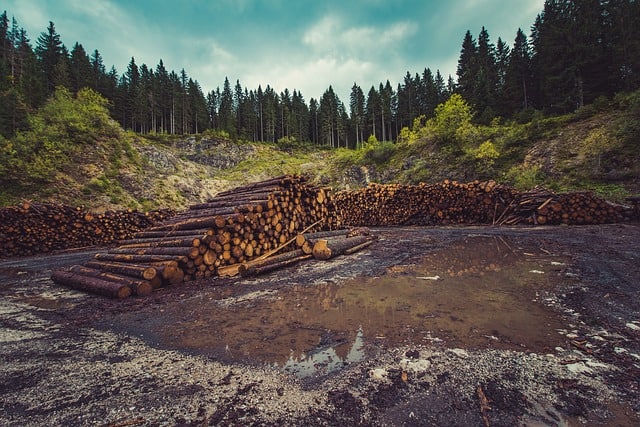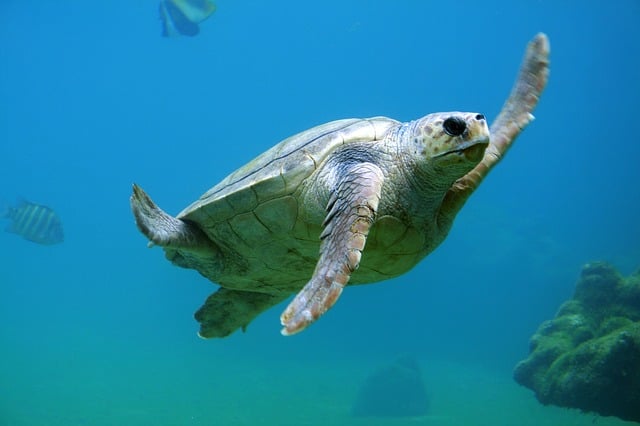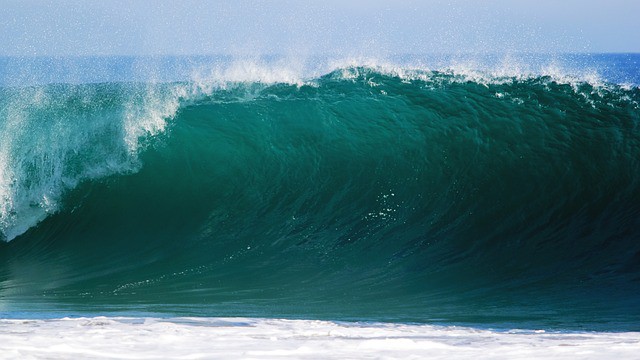Although some animals dwell with man in his home or residential settlements, many animals live far away from humans, and these sets of animals are commonly referred to as wild animals, and no place describe their dwellings like the forest. The forest is not just a place where tall trees and many shrubs grow, but it is a world for numerous living animals and therefore it ought to be preserved.
Unfortunately, man has continued to exploit the resources of the forest at the expense of these living wild animals, and this is turning into a universal practice in almost every place where a forest exists.
This exploitation includes subtle activities such as hunting and wood fuel generation which is common in rural areas to large-scale activities like logging and constructions which are mostly undertaken for economic or developmental purposes. All these activities are commonly termed “deforestation” activities because they all contribute to the loss of the forest.
Therefore, deforestation refers merely to loss of forest features in a land area where they do exist. It is not the loss of the land to other activities because sometimes this is not so, but the loss of the features that makes land, forest, and these features includes trees, carbon dioxide balance, water recycle and retention, optimal humidity and animal territorial distinction. Where these features are non-existent, the forest is lost, and therefore the natural habitat for these wild animals is lost.
The activities that lead to deforestation are often beneficial in the alternative, to man, but grossly detrimental to these wild animals which eventually become displaced and now live as refugees in their own domain.
The effect of deforestation on wildlife is numerous, and in all cases, they are negative, detrimental and adverse and a proper understanding of these will contribute significantly to the value humans placed on their counterparts living beings and will thus influence our actions in this regard.
Effects of Deforestation on Wild Animals
The impact of deforestation on wild animals is numerous, and each of them is closely related to one another. These effects are not species selective, but all-encompassing because in every case, deforestation alters the balance of the ecosystem to the extent that all animals irrespective of their species including aquatic animals are affected.
The effects that are outlined in this are the most common adverse effects of deforestation from distortion of the forest habitat, to the discomfort of these animals, their suffering, deaths and eventual extinction. Some of these effects are succinctly described here.
-
Degradation and Loss of Habitat
The habitation of any living thing is described as a natural habitat. The forest is a habitat for plants and animals, precisely wild animals and other living animals that are not wild such as birds, some aquatic animals, and insects.
When the forest is depleted, degraded or totally lost, the habitat of these living; these are consequently lost, and just like in human lives, the homes of these animals are lost.
Imagine what it means to lose a home—freedom, comfort, convenience, familiarity, source of resources, and place of breeding and dwelling all lost and everything left represents a beginning that you aren’t prepared for.
That’s what deforestation (the loss of forest features) subjects these wild animals too. In discussing this phenomenon, emphasis must be placed on what deforestation actually means—the loss of forest features. This because the land mass may be conserved or left unused but the elements as earlier listed that makes that piece of land forest is lost and gone.
For example, the monkeys are tree-loving creatures that enjoy living in the above of the terrestrial terrain. Without these trees due to the impact of deforestation activities, the land may be present, but that doesn’t make a habitat for them in the absence of trees, and this is applicable in many other ways to many other animals.
In addition to these, many other factors contribute to making an area or environment suitable for habitation for different living things. These are natural elements that are dependent on the presence of trees and other plants, and they include temperature, humidity, air quality, and sunlight intensity among others.
Deforestation alters these parameters sharply because they are dependent on subtle changes. For example, without trees the concentration of carbon dioxide increases, which contributes to the distortion of the air quality and also the intensity of sunlight and relative humidity because trees serve as shades and good water recycled and retainers.
-
Starvation and Scarcity
The forest consists of a complex eco-system food chain and interdependence. For example, herbivorous animals such as the Zebra, Antelope, Deer, etc., feed on plants such as grasses and shrubs and at the same time serve as food for predatory animals such as Lions, Tigers, Wolves, etc.
Deforestation takes away these plant food sources and starvation sets in. Because all living things require their food nutrients to survive, the quest for survival initiates migration in search for areas with food which eventually leads to scarcity. This scarcity, in turn, increases starvation amongst these hungry animals.
Hence, poverty and starvation have other effects on these wild animals such as unhealthy competition, malnutrition, deaths and a decline in reproduction which reduces the wildlife biomass.
Also, fruiting trees which also serve as food sources for many trees, climbing animals and birds are lost to deforestation, and this also leads to starvation. Because of the complex, the interconnected and interdependent food chain of the forest ecosystem, almost every species of these animals faces an unprecedented famine that results in ill health, loss of lives and decline in reproduction.
-
Deprivation of Protection
The forest serves as a bastion of protection for wild lives. They are protected from weather and climate changes, drought and famine, and unregulated human exploitation. Deforestation exposes these wild animals to a lot of harm.
These harms include exposure to personal attacks during migration and other physical injuries like wildfires and erosion. Deforestation reduces or totally eliminates the presence of trees.
Trees protect lower grasses and shrubs from drying employing their leaves shades and also retain large volumes of water in their roots that also supplies these smaller plants during the dry season as well as reduce the terrestrial water during the raining season.
The absence of these trees which is the most common marks of deforestation leaves these plants vulnerable to drying and susceptible to wildfires during dry seasons and at the same leaves the entire forest to erosion during raining seasons especially in cases where there is an abnormal increase in rainfall.
This erosion even affects animals that appear to live in holes and caves.
In addition to these, some of these deforestation activities resulted in roads, railways or settlement being constructed around or in between these forests. These animals for one reason or the other seeks to continue their quest of survival across these roads especially when they separate these forests.
In the process, most of them lose their lives in a car or train crashes, especially those that are not sensitive to sounds or sight. Others are perceived as enemies by human dwellers and are immediately attacked and killed. Some of these animals die as breastfeeding mammals which also result in the death of their offspring.
-
Loss of Territorial Distinction
Every city represents a general dwelling site for all humans, but within each municipality irrespective there is territorial domain. In our cities, some places are sometimes termed Government Restricted Areas (GRA) while some areas are accessible to a particular set of people.
This also exists in the forest which is the general habitat of the wild animals. In almost every hectare in the woods, there are territories, and these territories are distinct from one another. Sometimes, it is among animals of different species such as the wolves and the Rhinos or between animals of the same species such as is witnessed amongst the lions.
These territorial distinctions are significant in the preservation of these species because they engender unity in feeding, breeding and reproducing and protection from preys.
Deforestation takes away these territorial distinctions and exposes these animals to the new environment where they could be scattered and vulnerable to the effects of the absence of the benefits of their colonies and territories.
It is important to note that many animals survive better in groups as packs or herds, and when deforestation scatters them into single units, their survival advantage is lost, and they become prey to any factor against their run for survival.
-
Depletion of Biodiversity and Extinction
Nothing destroys biodiversity like the loss of habitat and deforestation is the most contributing factor to the loss of habitat because the forest represents the most significant portion of biodiversity of both plants and animals.
Deforestation causes the indirect loss in certain species of every genus of the wildlife population, and this causes the loss of biodiversity. The sad news about this induced loss of biodiversity is that each species lost, leads to the extinction of that species and other species in that taxonomical genus and family.
Historically, many animals such as the passenger pigeon, the saber-toothed tigers, the Pyrenean ibex, the Quagga, and the great auk to mention a few amongst hundreds of others have gone extinct. Although deforestation is not solely responsible for their extinction, it is a major contributory human factor in the disappearance of these animals.
Currently, deforestation activities are growing in most part of the world, leaving most extant species, especially the vulnerable ones at the risk of extinction. Extinction is the ultimate adverse effect of deforestation and deforestation activities.
Every other fact that has been mentioned and discussed above contributes significantly and ultimately to the disappearance of these animals and total loss of biodiversity.
-
Water Pollution
Deforestation activities such as mining and agriculture results in the pollution of water bodies around the habitats of wild animals. These activities involve the use of toxic chemicals which are washed into these water bodies when it rains.
Because water bodies are interconnected and many of them serve as suppliers of other tributaries, irrespective of where these animals relocate to, these polluted water flows there, and when they drink it, it affects their health and in some cases lead to their death or unintended mutation.
-
Climate Change
Climate change has been the talk of the globe, and although humans have remained the beam of focus, these changes are also affecting the live output of animals. One of the leading causes of climate change is deforestation because these changes are induced by the quantity of atmospheric carbon.
Trees are great depots of coal because they utilize it for photosynthesis. When they’re burnt, this carbon is released into the atmosphere, and at the same time, their absorptive function on other sources of carbon is lost.
These changes induce unfavorable weather condition, alter the rainfall pattern and also lead to desertification. Ultimately, they destroy the habitat of these animals and makes them live under adverse conditions that trigger mutation, loss of biodiversity and extinction.
Conclusion
Forests are not just lands that are studded with trees for perceived economic and developmental exploitation. Forests represent a world for other living things that share many similarities with humans. These are wild animals.
Deforestation is a deliberate act for any reason to strip the forests of their forest features and has remained the most unpalatable effect of human exploitation of the woods across the globe.
Activities such as logging that leads to deforestation appear justifiable because they result in the production of woods for construction and provide large land portions for different purposes.
This has been the reason for the increasing rates of deforestation across the globe. However, these activities are resulting in harmful, adverse and almost irreversible effects on wild animals that live in these forests.
These effects include the degradation and loss of the homes of these wild lives which leaves them vulnerable to different attacks and diseases. This also causes them to lose their territorial distinction which is essential for protection, defense and feeding patterns, especially those animals that live together and move in groups or live in colonies.
In addition to these, deforestation also leads to starvation and scarcity through an unexpected disruption of the complex food chain of the ecosystem. This will lead to competition for scarce resources which causes weak animals to perish at the expense of the stronger ones.
The other effect of this is that there is a vast migration to new sites in the search for survival and when these sites don’t accommodate the uniqueness, they perish.
Ultimately, these animals die, and some species are going beyond just starving and goes extinct altogether. Therefore, deforestation as a human activity must be curbed by regulating authorities of different countries.
Policies that protect wild animals restrict illegal logging and hunting and sponsor the planting of trees in areas where logging has taken place should be formulated, and responsible agencies should ensure that these policies are enforced to the latter.
Besides, more zoological gardens, parks, and reserves should be created, and priority should be given to those species that are on the verge extinction, while public awareness should be targeted towards the preservation of our forest.




